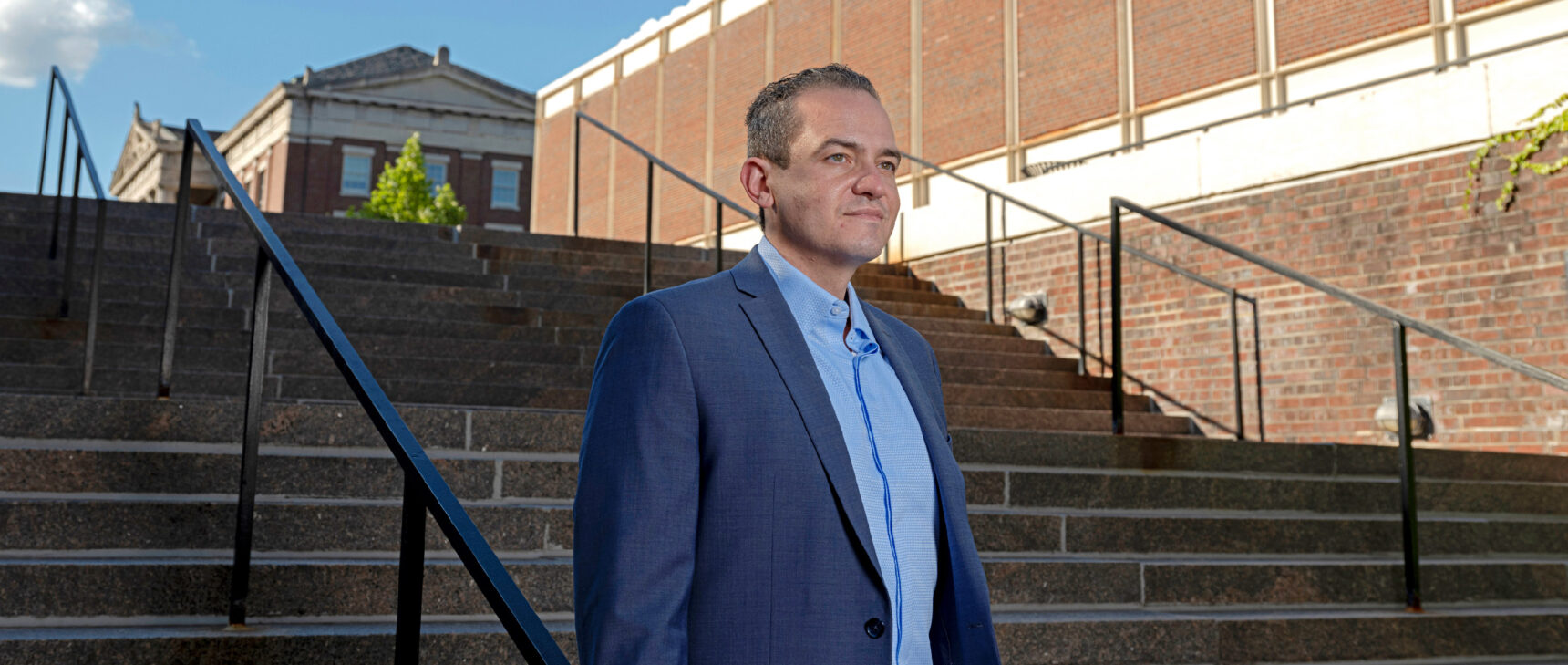Geometric Analysis Reveals How Birds Mastered Flight
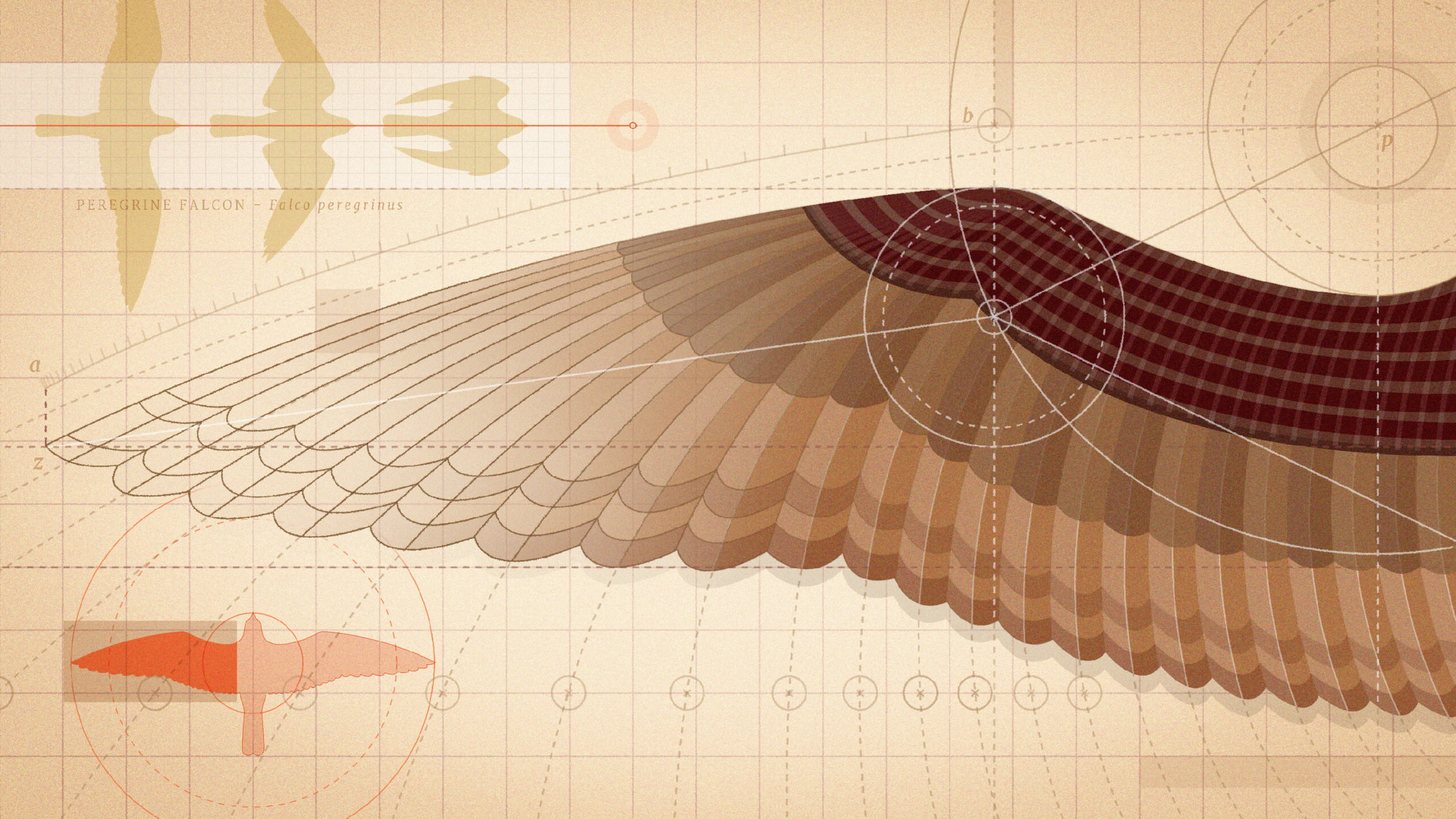
Researchers are finally beginning to understand how the biomechanics of a bird’s wing allows a bird to fly with extraordinary maneuverability.
Samuel Velasco/Quanta Magazine
Introduction
In a rectangular room draped in camouflage netting, four Harris’ hawks took turns flying back and forth between grass-covered perches while scientists recorded their every biomechanical flutter. The researchers were partaking of the time-honored pursuit of watching birds fly — although in this experiment, their real interest was in watching them land.
In more than 1,500 flights between the perches, the four hawks nearly always took the same path — not the fastest or the most energy-efficient, but the one that allowed them to perch most safely and with the most control. As Graham Taylor, a professor of mathematical biology at the University of Oxford, and his colleagues described recently in Nature, the hawks flew in a U-shaped arc, rapidly flapping their wings to accelerate into a dive, then sharply swooping upward in a glide, stretching out their wings to slow their progress before grabbing onto the perch.
“Watching them is fascinatingly alien,” said Lydia France, a research data scientist at the Alan Turing Institute and a postdoctoral researcher at the University of Oxford who designed and helped run the experiments. The ability of hawks to land by nearly stopping in midair is unmatched by their mechanical counterparts.
“Evolution has created a far more complicated flying device than we have ever been able to engineer,” said Samik Bhattacharya, an assistant professor in the experimental fluid mechanics lab at the University of Central Florida. The reasons why today’s aircraft can’t match avian maneuverability aren’t simply a matter of engineering. Although birds have been meticulously observed throughout history and have inspired designs for flying machines by Leonardo da Vinci and others through the centuries, the biomechanics that make birds’ maneuverability possible have largely been a mystery.
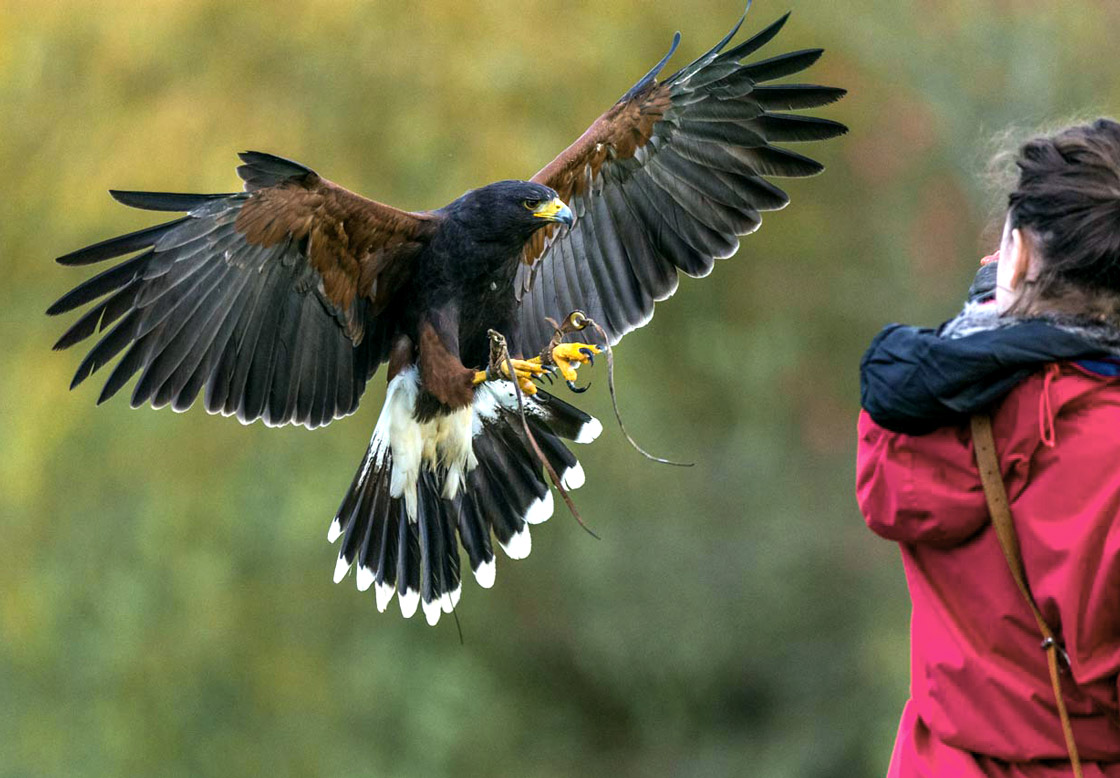
A Harris’ hawk prepares to perch on the arm of the researcher Lydia France during experiments at the University of Oxford.
Rob Bullingham
A landmark study published last March in Nature, however, has started to change that. For her doctoral research at the University of Michigan, Christina Harvey and her colleagues found that most birds can morph their wings mid-flight to flip back and forth between flying smoothly like a passenger plane and flying acrobatically like a fighter jet. Their work makes it clear that birds can completely alter both the aerodynamic characteristics that govern how air moves over their wings and the inertial characteristics of their bodies that determine how they tumble through the air to complete fast maneuvers.
These discoveries identified big, previously unknown factors contributing to birds’ aerobatic prowess and revealed some of the evolutionary pressures that made birds so proficient at flying. They are also helping to redraft the blueprints that future engineers might follow when attempting to design aircraft as maneuverable and adaptable as birds manage to be, seemingly with effortless grace but drawing on formidably fast physical and mental resources we are just beginning to appreciate.
Harvey, who studied mechanical engineering as an undergraduate, describes her studies of bird flight as “quantifying something that, to me, looks like magic.” Early in her career, before making a transition from engineering to biology, she never thought she’d be the one trying to discern the birds’ secrets.
The Geometry of Birds
“I didn’t even used to like birds,” Harvey said. Yet one day in 2016, she sat on a rocky ledge in a park near the University of British Columbia, resting after a short hike and thinking about what project to pursue as a newly appointed master’s student in a biology lab. Surrounded by gulls, she thought: “They fly really cool, if you ignore how annoying they are.”
The gull quickly became what she calls her “spark” bird, and she soon gave up avoiding them in favor of trying to understand more about their power of flight. But as Harvey dug deeper into the literature, she realized there were major gaps in our knowledge of how birds fly.
She was deeply inspired by a 2001 study that Taylor had co-authored while he was pursuing his doctorate at Oxford. Taylor’s paper was the first to lay out a theoretical groundwork for how birds and other flying animals achieve stability, the trait that keeps them from being pushed in the wrong direction.
Stability, Taylor explained, comes from a combination of inherent stability, or innate resistance to perturbations, and control, an active ability to alter responses to perturbations. Inherent stability is what a good paper airplane has; control is a fifth-generation fighter plane’s forte. The 2001 research showed that inherent stability played a bigger part in the flight of birds than was generally believed.
Soon after reading Taylor’s paper, Harvey focused her doctoral work on developing the first dynamic equations of stability in bird flight. “We have all these equations for aircraft,” she said. “I wanted them for bird flight.”
To understand the stability and instability of bird flight and the challenges that birds face in controlling them, Harvey realized, she and her team needed to map out all the inertial properties of birds, something that previous studies largely ignored or treated as unimportant. The inertial properties relate to a bird’s mass and how it’s distributed, in contrast to the aerodynamic properties that act on a bird in motion.
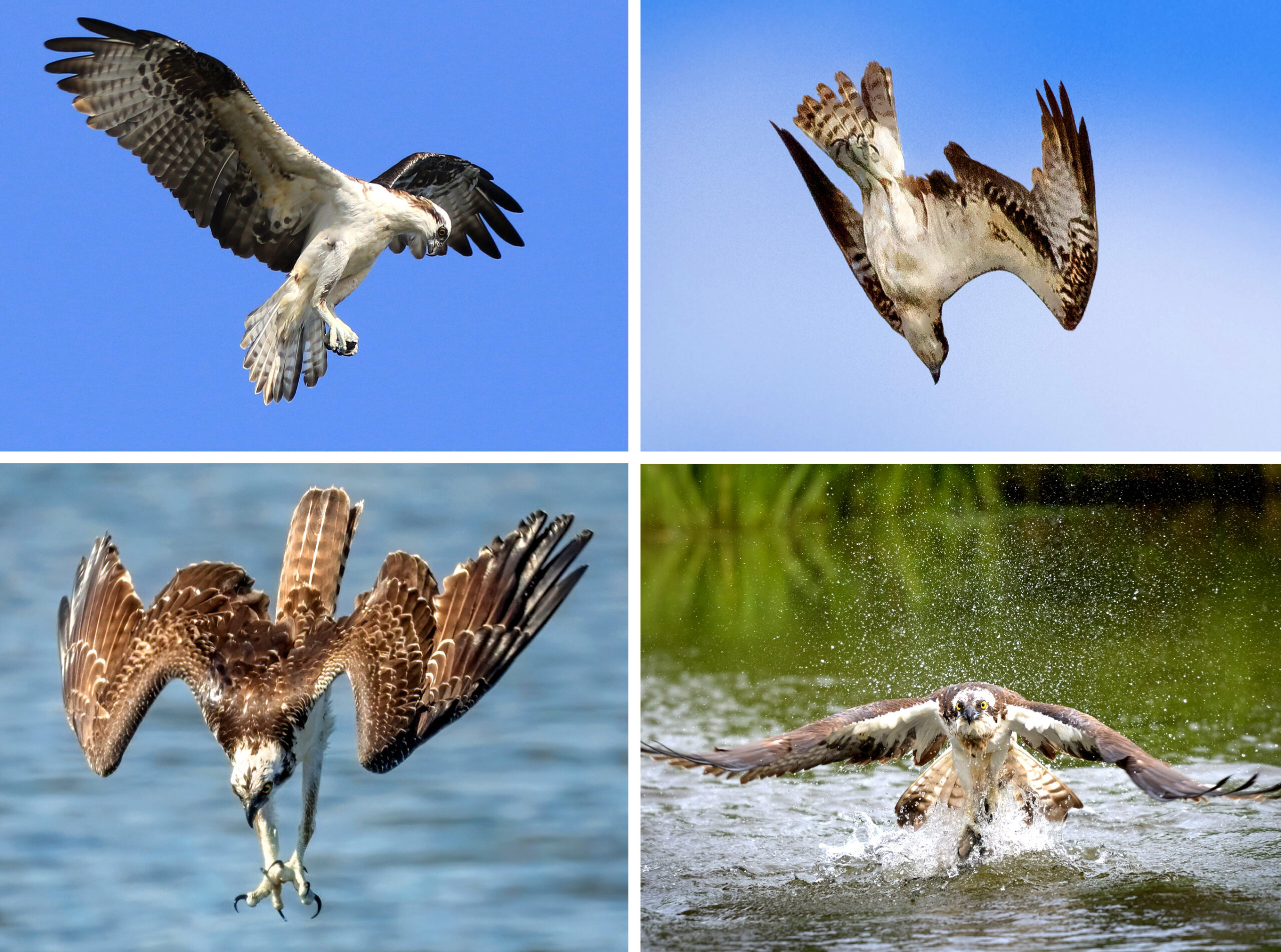
Ospreys show off their maneuverability at different stages of a diving attack on their prey. High in the air, an osprey can briefly hover over fish it has spotted (top left). It glides downward (top right), then dives more steeply with its claws extended (bottom left). After grabbing a fish, it flaps its wings to pull up sharply (bottom right). The wings change shape to adjust their aerodynamic properties as needed.
Starting at the top-left, clockwise: Trish Gussler/Andy Morffew/Susan T. Cook/Jarkko J.
Harvey and her team gathered up 36 frozen bird cadavers — representing 22 very different species — from the Beaty Biodiversity Museum at the University of British Columbia in Vancouver, Canada. They dissected the cadavers down to each individual feather, took length, weight and wingspan measurements, and manually extended and contracted the wings to figure out the range of motion of the birds’ elbows and wrists.
They wrote a novel modeling program that represented different types of wings, bones, muscles, skin and feathers as combinations of hundreds of geometric shapes. The software allowed them to calculate relevant characteristics such as the center of gravity and the “neutral point” that is the aerodynamic center of the bird in flight. They then determined those properties for each bird with its wings configured in a variety of shapes.
To quantify each bird’s stability and maneuverability, they calculated an aerodynamic factor called the static margin, the distance between its center of gravity and its neutral point relative to the dimensions of the wing. If a bird’s neutral point was behind its center of gravity, they considered the bird to be inherently stable, meaning that the flying bird would naturally return to its original flight path if pushed off balance. If the neutral point was in front of the center of gravity, then the bird was unstable and would be pushed further from the position it was in — which is exactly what must happen for a bird to be able to do a breathtaking maneuver.
When aeronautical engineers design planes, they set the static margins to achieve the desired performance. But birds, unlike airplanes, can move their wings and shift their body postures, thereby altering their static margins. Harvey and her team therefore also evaluated how each birds’ inherent stability changed in different wing configurations.
In effect, Harvey and her colleagues took a framework that’s “very similar to what we do for aircraft” and adapted it to birds, said Aimy Wissa, an assistant professor of mechanical and aerospace engineering at Princeton University who wrote a commentary on their work for Nature.
Flexible Flight
When feathery therapod dinosaurs launched themselves into the air roughly 160 million years ago, they were limited flyers, fluttering only over short distances or in tiny bursts. But with only a few exceptions, the more than 10,000 species of birds descended from those dinosaurs have evolved into extraordinary flight machines, capable of graceful gliding and acrobatic maneuvers. That kind of maneuverability requires taking controlled advantage of instability — and then pulling out of it.
Because modern birds are so maneuverable, biologists assumed that they had evolved to be more and more unstable. “It was believed that birds, like fighter jets, just kind of lean into these instabilities to perform these really fast maneuvers,” Harvey said. “And that’s why birds fly in this way that we can’t quite replicate yet.”
But the researchers found that only one of the species they looked at, the pheasant, was completely unstable. Four species were completely stable, and 17 species — including swifts and pigeons — could switch between stable and unstable flight by morphing their wings. “Really, what we’re seeing is these birds being able to shift between that kind of more fighter-jet-like style and a more passenger-jet-like style,” Harvey said.
Samuel Velasco/Quanta Magazine
Further mathematical modeling by her team suggested that rather than enhancing birds’ instability, evolution has been preserving their potential for both stability and instability. In all the studied birds, Harvey’s team found evidence that selection pressures were simultaneously maintaining static margins that enabled both. As a result, birds have the ability to shift from a stable mode to an unstable one and back, changing their flight properties as needed.
Modern aircraft can’t do that, not just because their aerodynamic and inertial features are more fixed but because they would need two very different control algorithms. Unstable flight means constantly making corrections to avoid crashing. Birds must have to do something similar and “there must be some level of cognition involved in that,” said Reed Bowman, a behavioral ecologist and director of the avian ecology program at Archbold Biological Station in Florida.
“People have been trying to understand the origin of birds as long as people have been studying evolution — and a major obstacle has been the complexity of flight and our inability to deconstruct it,” said Matthew Carrano, curator of Dinosauria in the Smithsonian Institution’s department of paleobiology.
What surprises him most isn’t that birds have these abilities to shift between stable and unstable modes of flight; it’s that some species, like the pheasant, seemingly don’t. He wonders if those species never evolved it or if they lost the ability at some point, just as modern flightless birds descended from those that could once fly.
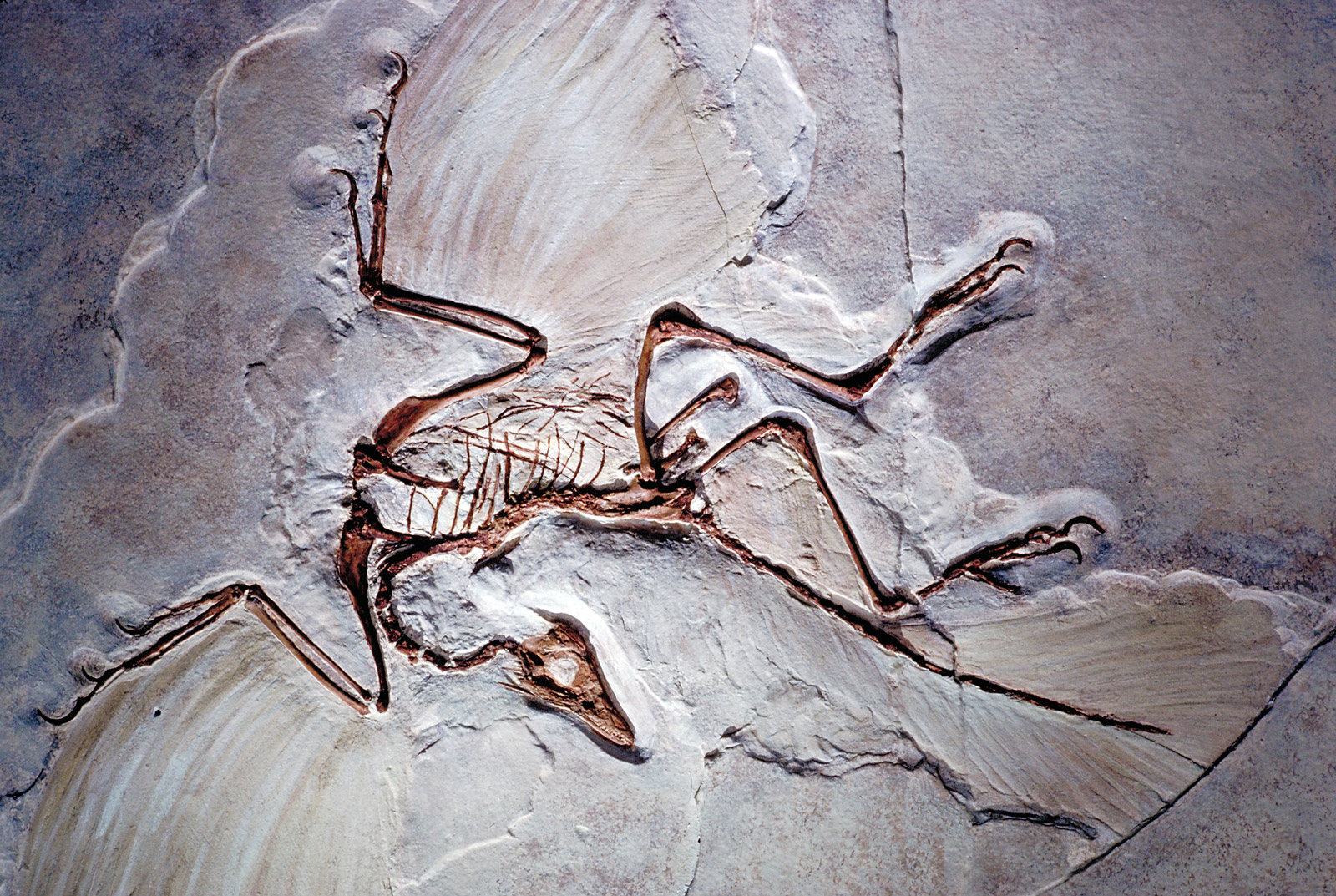
For early feathered theropods like Archaeopteryx, stability during their brief times in the air was probably more important than maneuverability. The needs of modern birds are more aerodynamically demanding.
James L. Amos/Science Source
Building Better Aircraft
Many of the somersaulting, spinning and plummeting maneuvers that birds have mastered aren’t ones that anyone would want to experience in a passenger aircraft. But uncrewed aerial vehicles, also known as UAVs or drones, are freer to make drastic maneuvers, and their increasing popularity for military, scientific, recreational and other uses is creating more opportunities for them to do so.
“This is a great step towards generating more maneuverable UAVs,” said Bhattacharya, who, upon seeing Harvey’s study, immediately sent it to his engineering group. Most UAVs today are fixed-wing aircraft, which are great for surveillance missions and agricultural purposes because they can fly efficiently for hours and traverse thousands of kilometers. However, they lack the maneuverability of the fragile quadcopters drones popular among hobbyists. Researchers at Airbus and NASA are dreaming up novel designs for winged aircraft that could mimic some of the incredible maneuvering talents of birds.
Taylor and his team are hoping to analyze how birds acquire the ability to perform complex tasks while learning to fly. If researchers can really understand these maneuvers, engineers might someday include AI in the design of new flyers, enabling them to mimic biology not only in appearance, but in their ability to learn flight behaviors.
As she sets up her new lab at the University of California, Davis, Harvey is still deciding where her future research will lie on the spectrum from basic research into bird flight to designing and manufacturing drones and planes. But first, she’s working to build a team of engineering and biology students who are just as passionate about working at the boundary of two very different fields as she is.
“I don’t think I was blossoming entirely within engineering,” Harvey said. When she started working at the edge of biology, she felt she could be more creative. Now, to the dismay of many of her engineering colleagues, she spends long hours working on perfecting bird figures. “I spend half my time drawing,” she said. “It’s really changed my perspective.”





